
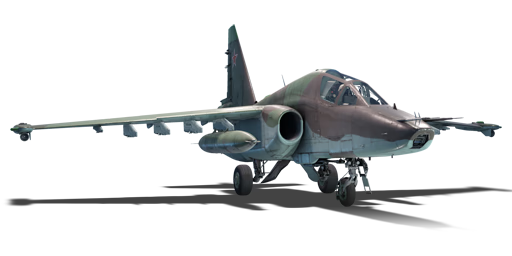


During the late '80s and the early '90s, a dedicated Tankovy Shturmovaya (Tank Hunter/Attacker) variant of the Su-25 was ordered. Built on the basis of the Su-25UB twin-seat trainer airframe, the rear cockpit was replaced with a larger fuel tank and a lot of new electronics. Besides the notable "hump back" shape of the fuselage, the aircraft received a lot of major upgrades under the hood. First off, the aircraft received a new fire control system and hardpoint management computer, allowing it to not only use new kinds of ordnance on its hardpoints, but also effectively manage them and even use multiple weapons on one hardpoint (primarily the APU-127-6 missile rack allowing it to use 8 Vikhr missiles on one hardpoint). The aircraft also received the Shkval and Prichal optical and laser targeting systems from the Ka-50 attack helicopter, in addition to the ability to use the Merkury and Khod external targeting pods and the Kopyo multimode radar pod. The GSh-30-02 cannon was mounted on a special hydraulic hinge allowing it to depress up to 30 degrees downwards for ground strafing runs. The countermeasures were incorporated into the tail instead of standalone dispensers in the wing-roots, and an Infra-Red Countermeasures (IRCM) system was added to the tail to confuse heat-seeking missiles trying to obtain a rear-aspect lock. Finally, the engines were upgraded to account for the extra weight. The aircraft was taken out of testing and a few were deployed for combat field-testing during the First Chechen War in 1994, where they proved to be very successful in their dedicated tank hunting role. However, the Su-25T was incredibly expensive, and in the financially limited Russian Air Force of the post-Soviet era, it was too expensive to mass produce, resulting in the program being officially cancelled in 2000 with only three prototypes and eight Su-25T production aircraft built. Many of the upgrades from the Su-25T would instead be incorporated into the cheaper Su-25SM (Stroyevoy Modernizirovannyi), the "modern" Su-25 built for the Russian Air Force in the 21st century. In a last ditch effort before the cancellation of the Su-25T program, Sukhoi would (unsuccessfully) market the Su-25T for export towards foreign customers as the Su-39.
The Su-25T, introduced in Update "La Royale", is a heavily upgraded modernization of the venerable Su-25 subsonic heavy attacker. This aircraft is rather unique as it has its own bag of tricks that are rarely found on other aircraft (if at all), such as the rear-hemisphere IRCM protection system and the 9K127 Vikhr multipurpose laser guided missiles. This aircraft is a powerful beast in mixed battles, utilizing its arsenal of TV and Laser guided weaponry, strong optics, punchy cannon, abundant countermeasures, and last-ditch IRCM protection, this aircraft will prove to be a tidal force in an uncontested sky above a ground battle. Unfortunately, unlike its predecessor, the Su-25, the Su-25T is not as well performing in dedicated air battles, due to its high battle rating where it is almost always faced with 4th generation fighter aircraft, active radar missiles, and powerful IR missiles with electronic countermeasure resistance which negate its advantage in the abundant flares and IRCM. In air battles, it is up to the pilot's situational awareness and wits to survive, and utilize the few tricks the aircraft has, such as the IRCM and the powerful R-73 air-to-air missile to stay alive.
flaps
flaps
flaps
brake
| Belt | Belt filling | Armor penetration (mm) at a distance: | |||||
|---|---|---|---|---|---|---|---|
| 10 m | 100 m | 500 m | 1000 m | 1500 m | 2000 m | ||
| HEFI-T/APHE | 42 | 41 | 35 | 29 | 23 | 19 | |
| AP-T/HEF-I/APHE/HEF-I | 56 | 54 | 46 | 38 | 31 | 26 | |
| AP-T/APHE/APHE | 56 | 54 | 46 | 38 | 31 | 26 | |
| APHE/HEF-I/HEF-I/HEFI-T | 42 | 41 | 35 | 29 | 23 | 19 | |
| APHE/HEF-I/HEF-I | 42 | 41 | 35 | 29 | 23 | 19 | |
| Name | Weight | Slot | ||||||||||
|---|---|---|---|---|---|---|---|---|---|---|---|---|
| 44 kg |  |  | ||||||||||
| 105 kg |  |  | ||||||||||
| 20 × | 376 kg | 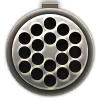 |  |  |  |  |  |  |  | |||
| 5 × | 505 kg |  |  |  |  |  |  |  |  | |||
| 235 kg | 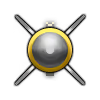 |  |  |  |  |  |  |  | ||||
| 370 kg |  |  |  |  |  |  |  |  | ||||
| 367 kg |  |  |  |  |  |  |  |  | ||||
| 367 kg |  |  |  |  |  |  |  |  | ||||
| 4 × | 456 kg | 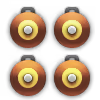 |  |  |  |  |  |  |  | |||
| 250 kg |  |  |  |  |  |  |  |  | ||||
| 508.3 kg |  |  |  |  |  |  |  |  | ||||
| 275 kg |  |  |  |  |  |  |  |  | ||||
| 515 kg |  |  |  |  |  |  |  |  | ||||
| 374 kg |  |  |  |  |  |  |  |  | ||||
| 410 kg | 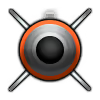 |  |  |  | ||||||||
| 318 kg |  |  |  |  | ||||||||
| 297 kg |  |  |  |  | ||||||||
| Drop tank (820 liters.) | 59.4 kg |  |  |  |  | |||||||
| 8 × | 401 kg | 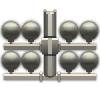 |  | |||||||||
| 94.3 kg |  |  |  |  | ||||||||
| 657 kg |  |  | ||||||||||
| 670 kg | 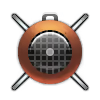 |  | ||||||||||
| 520 kg | 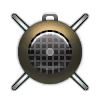 |  | ||||||||||
| Mercury targeting pod | 211.5 kg | 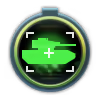 | ||||||||||












Flight performance | |
|---|---|
Survivability |
|---|
Weaponry | |||
|---|---|---|---|